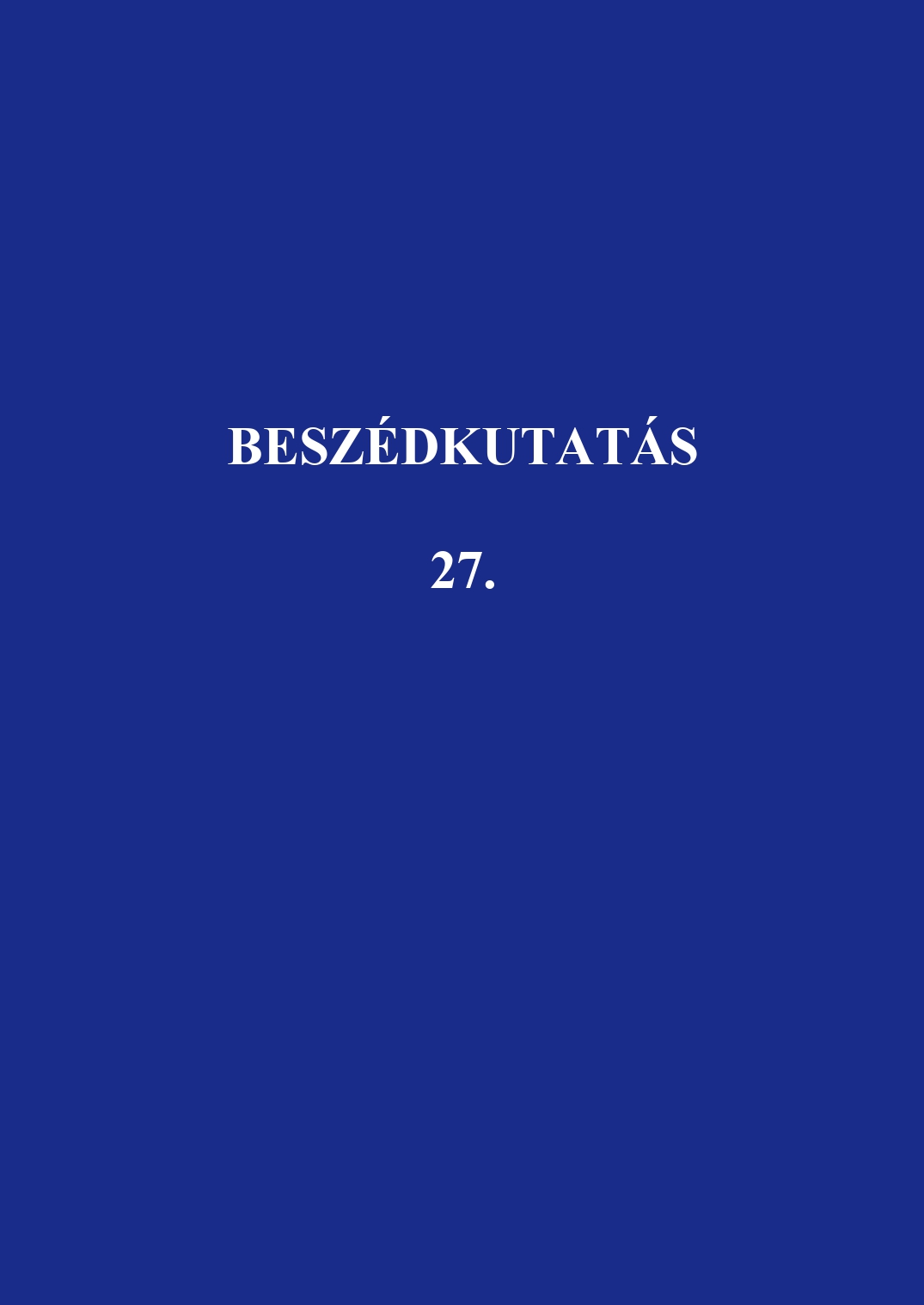A diskurzusjelölő-használat életkori sajátosságai a nyelvi interjú szövegtípusában
Abstract
Effects of age on the use of discourse markers in sociolinguistic
interviews
This study analyzes 8 interviews (1,030 minutes) from the Szeged Sociolinguistic Interview project, focusing on the six most frequently used
discourse markers of Hungarian (hát “well”, ugye “[tag]”, persze “of course”, szóval “so”, egyébként “by the way”, and úgyhogy “thus”) in the four age groups of the corpus. These discourse markers were used most by the 60-70-year-olds, followed by the under-18 group, the over-70 group, and finally the young adults/middle-aged group. In every age group the most frequently used discourse marker was hát, its proportion of use compared to the 6 discourse markers’ average was between 46.06% and 82.25%. The results of the various age groups differ not only in the proportions of discourse markers used, but also in their functions, which is indicative of differences in strategies of forward planning of speech. Younger respondents used discourse markers more for self-correction, word search, and mitigation, and much less for signaling attitudes. In contrast, middle-aged and older respondents used discourse markers for conversation management, self-
reflection, and expression of emotions as well. Respondents in the 60-70 age group produced longer narratives and were more deeply involved in stories, their discourse markers signaling more emotional involvement and various speaker attitudes. Narratives produced by the over-70 group were longest, but these respondents produced more off-topic digressions. Still, they used discourse markers also for commenting on stories they produced.
A Beszédkutatásba leadott tanulmányokat máshol változatlan formában megjelentetni nem lehet. Más személy a szerkesztőbizottság engedélyével és megfelelő hivatkozással használhat fel ábrákat a publikált tanulmányokból.





